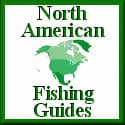Bass on Hook is Supported by our readers. As an Amazon Associate We earn commissions from qualifying purchases. For more informtion read our Amazon Affiliate Disclosure and Affiliate Disclosure Policies.
Braided Versus Monofilament Fishing Line
By Nick Ruiz
For those of you who suddenly feel as though you've come under a full-on advertising assault of the senses regarding whether braided style or monofilament line is the right choice, you need not feel alone.
I empathize!
For the last five or six years the amount of line options available to the bass angler has nearly quadrupled, offering claims of unmatched stretch reduction to complete and total indestructibility.
As we speak line manufacturers are pouring millions upon millions of dollars into research in a frantic attempt to create and market the next great "super-line".
With that said it undoubtedly begs the question, "Which line is right for me"?
Monofilament Line What It Has To Offer

We'll start with the basic monofilament line that has been considered the standard equipment on the reels of anglers fresh and saltwater alike since FDR was in power.
Monofilament or "mono" as it is more commonly referred to is comprised of many synthetic components.
Upon contact with air, these synthetic components solidify into the slick string like substance that anglers have come to know and love.
For the most part this procedure of "shooting" the gel though a series of progressively smaller openings while cooling it has remained for the most part, the same for nearly half a century.
It is only in the last decade that true quantum leaps have been made in the composition and production of this product.
Before we go on allow me to dispel a rumor immediately.
Every monofilament line is not same!
A spool of 10 pound test mono from Company A can be drastically different from Company B.
It differs in line diameter, in line shape and in overall handling.
Those of you who stick religiously to one brand of line and have used another in a pinch, can vouch for the fact that there is a definite difference.
Monofilament Diameters Defined
We'll start with diameter.
For the masses, packaging that advertises "super thin" will render an instant sale but are "thin" lines really thinner?
On nearly every package of line right next to the pound test number will be a small decimal number.
That number denotes in millimeters (actually tenths or hundredths of a millimeter), the average thickness of that pound test line from that company.
With that said, if thin is truly what you want then select a pound test that suits you then set out comparing the millimeter numbers to find the truly thinnest line.
Monofilament Stretch Parameters
Next comes the issue of stretch.
As of late line stretch has been banished from nearly every brand of line replaced by the words "ultra-low-stretch" or "no-stretch".
From the sales returns anglers can't get enough of these types of lines.
The wave of low stretch monos has only taken to the shelves of tackle shops in the past three or four years.
They openly boast firmer, stronger hook-sets, fewer lost fish and most of all greater overall sensitivity.
While all of this is very true, is some stretch better than no stretch at all?
I feel yes.
Yes for two reasons.
Number one, because some stretch provides for shock absorption which can be an anglers best friend if the circumstances provide.
Example:
fish making last minute runs at the boat where only a very short length of line is out.
That line stretch will buy you those precious extra few seconds to get to the bail or the spool release to get some more line out thus avoiding the one that got away story entirely.
Number two, stretch actually in my opinion gives certain lures more (specifically crankbaits) action enhancement.
Example:
A wide wobbling, diving crankbait fished on stretchless piano wire type line will noticeably loose some of its "bass appeal" because it will look like its being dragged through the water rather than lightly guided.
Monofilament Line Shape
Finally, the shape of the line will play more a part in its casting and handling rather than its action in the water.
For the most part even today monofilament line when viewed head on is a perfect circle.
However, there are several line companies experimenting with flattened fly-line type line shapes which when viewed head on will look like a wide tapering oval.
I have used one of these lines on a trial basis and I will say this it does not cast farther or is more accurate.
Though I will say it lays much nicer on a spool and provides baitcast reel using anglers with a nearly backlash free day.
As for handling in the water, it will lay higher out of the water just like its fly line companion and will drastically take depth off of any sub surface rig known to man.
One practical application:
Topwater lures and this type of line are very good bedfellows because of the the way it lays on the water to the way it stays out of the hooks of the topwater plug.
In many cases I would take it over conventional spherical monofilaments.
As for handling, that's a personal choice that can only be made by trial and error.
When a line feels right or you "like the way it feels", then you found the line you like.
I would in very few instances with monos, ask, is there a right and wrong brand?
I will however strongly urge you to stay away from the bottom shelf bargain brands that offer five thousand yards for six bucks.
The problem with these lines is usually inconsistent diameters and handling as well as many nicks and abrasions that break down the strength of the line right out of the package.
I have personally settled upon two brands which include Gamakatsu's new G-Power line and Excalibur Silver Thread.
This because they combine all the elements mentioned above in what I perceive as a "happy medium".
Braided Lines And What They Offer
On the other end of the line spectrum falls the braided "mega-lines" that for the most part, have been hyped more than a Don King fight in Manhattan.
Upon their arrival they boasted everything from "absolute zero stretch" to complete invulnerability to anything the fish and elements could throw at it, short of a global apocalypse.
Granted they do offer something awesome in the form of sheer strength and toughness, they are not something brand new.
Fly fisherman have been using braided type lines as backing on their reels for several years now.
It's only after a scientist at Johnson Worldwide Associates (JWA) the makers of the popular Spiderwire, saw its potential as full fledged fishing line did it began to attract attention.
It's no secret why it is so tough though.
It's because all the materials in it are made by DuPont and were originally designed to be used as the stitching and reinforcement on bullet proof vests.
An interesting point of fact is that the actual name of the original braid Spiderwire is derived from the way it is produced.
It, much like a spider weaves silk is woven using a series of spinnerets tightly braiding strands of its components together to form a very tight single strand which is what anglers receive on the spool.
This also explains its uncommonly high shelf price.
It so happens that not only is the material used very expensive but the process takes several hours just to produce one 150yd spool.
Spectra, Specta2000 and Dacron are just a few of the new synthetic materials being used in the new line's construction.
Braided And Mono Differences
Unlike monofilaments these lines have a personality all their own when they hit the water.
First off, they float!
This will take some getting used to and in some cases, rigs need to be adjusted to accommodate it.
I would also not recommend this line for a topwater application as it has a nasty habit of floating back around the lure when not being twitched and fouling in the hooks.
Second, one has to have a keen eye to see when these lines do begin to deteriorate.
They do not show the "pockmarks" or light colored slices that monofilament does.
It merely begins to fray and unravel thus significantly decreasing the lines overall strength.
Likewise, the line should be given a quick visual once over while reeling it in and a thorough looking at or near the last five or six feet.
Also a quick look at the knot wouldn't hurt either.
The Coarseness Of Braided Lines
Another very important fact about these lines is that from the way they are produced they are given all the qualities of a hacksaw when it comes in contact with rod and reel components as well as body parts.
Unless your rod has titanium or another similar material lining its guides, I would not recommend you use it without changing the guides or putting inserts in each guide.
In more than one instance I have seen it make serious indentations and abrasions in rod guides.
This also applies to line rollers on spinning and levelwinds on baitcast reels, as such they will be harmed from its ultra coarse texture as well.
Now in fear of sounding like a salesman for JWA, I do prefer to use the reels that is recommended for use with this type of line.
Rods can vary as long as they have sufficient guides to resist abrasion.
However, I don't believe there are any reels besides those that are produced by JWA that can properly lay the line on the spool.
This is because of the "cross-web" line wrap feature that makes spools and levelwinds travel extra fast being sure not to allow the line to bury under itself causing fouling and backlashes.
Unfortunately there really is no way around this one.
It's patented and they set the prices!
A final tip on ways we can prepare our equipment for this type of line is to take a cotton swab and place a coating of Turtle Wax on all the rod guides.
One might ask why?
Because like boats and surfboards, wax protects the surface and reduces the friction of line on metal.
The Practicalities Of Braided Lines
As far as this line being practical I will say that it does have its applications.
I cite flipping and pitching as one of them.
You will be grateful for its pure strength when it comes time to start horsing hawgs out of some truly nasty cover.
Also one can rest assured that the chances of this line being abraded from structure contact, provided you are not fishing razor blade plants is absolutely minimal.
Aside from that aspect where ultra heavy cover comes into play, chances are the new advanced monos can take care of business.
As far as the selection due to a massive advertising campaign, one's braided line choices are very limited to say the least.
As from what I have seen we have been reduced to the JWA spider wire and I believe Bass Pro Shops produces a "generic" braid sold in its catalogs.
With that said I suggest taking your time with line selection giving each a fair chance and using what you are comfortable with.
Because only then will you be performing to your very best.
And remember, the line is the only link between you and the fish!
Catch ya' on the water...
Nick Ruiz
Look for other articles written by Nick Ruiz in Nick's Pro Staff Angler Profile










